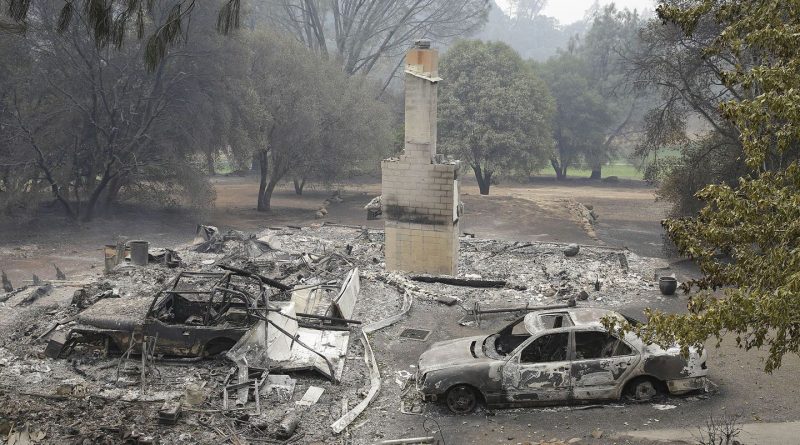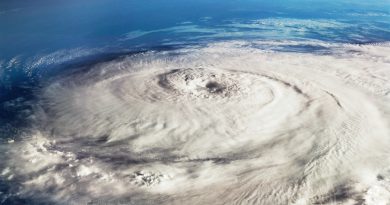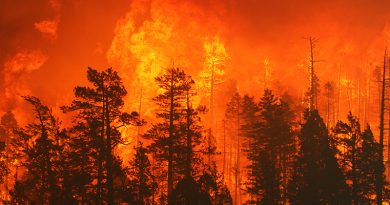The Broader Impact of Recent Disasters
2017 was certainly a year of natural disasters. We’ve seen some significant hurricanes, wildfires and earthquakes. In this article we explore the longer term effects of these events on our society as a whole. The way our economy works, it’s very clear that when something happens on this level we can expect shortages, political pandering and promises, debt at all levels, and long-term lifestyle disruption for many people.
Shortages of Building Materials
The real estate sector of the economy already appears to be overheating across the country. Prices are very high. New construction and repair services are in high demand. The destruction of so much property in the last year has contributed significantly to an already existing problem.
Material prices now rival labor shortages as builders’ main concerns, a National Association of Home Builders survey showed in January. Prices for common building varieties of wood like spruce and southern pine are at or near records, according to price-tracking publication Random Lengths. March-dated lumber futures at the Chicago Mercantile Exchange hit a record of $532.60 per 1,000 board feet last week after climbing more than 50% in 14 months. … Problems mounted. The worst wildfires on record hit Canada’s Pacific Coast. Hurricane Irma temporarily closed mills in the forests of Florida and Georgia. And then came a shortage of railcars and trucks to transport timber from forests in regions like the Pacific Northwest
Source: WSJ
If you have undertaken a home improvement project in the last 6 months you’re probably acutely aware of the spike in prices for materials. A friend who recently visited Home Depot remarked that prices on OSB (flakewood similar to particle board) had practically doubled.
Lack of Availability of Affordable Housing
There are many thousands of Americans that were displaced because of the disasters occurring last year. It has created a shortage of affordable housing which in certain parts of the country has become extreme. It’s not simply a matter of putting together temporary housing. When property is destroyed on the level that we experienced in 2017, people need long-term solutions.
Many younger Americans are also affected by these issues since they tend to compete for lower income housing. As a result many young people choose to stay at home with parents.
According to a November report in The Hill, 70,000 Americans are now living in hotels because of weather-related displacement, and thousands more are living in shelters. Along with these disaster victims, says Sarah Mickelson, director of public policy at the National Low Income Housing Coalition, others are settling for additional substandard options – by crashing on couches, living in RVs or even moving back into their old flooded, mold-infested homes.
Source
Political Promises – Deficit Spending
In spite of promises to cut spending and taxes, governments at all levels and in various areas of the country have taken steps to provide housing on the public dime.
Cities and counties have taken continued steps in 2017 to house those in need of homes. San Diego announced it would issue $54 million in tax-exempt bonds to put towards building affordable housing units and Seattle announced $100 million in spending towards affordable housing in December. The U.S. House of Representatives passed an $81 million bill for emergency disaster relief in California, Texas, Florida and Puerto Rico that would give money to housing and public works recovery efforts on December 21. The bill has since faced opposition in the Senate.
Source:
Newsweek
Inflation
Due to government spending and shortages we expect that commodity prices will continue to climb. (i.e. building materials, precious metals, oil, etc.) As we explored earlier, due to demand, disasters (and war), and regulation some natural resources are in short supply. Relative to obvious shortages such as building materials, average folks are already feeling the pinch. The price of crude oil appears to be hovering around $60 a barrel which is up about one third from recent lows. We expect that it will continue to climb. And as deficits increase at the national level and as “emergency” spending now appears to be the new normal we would expect the dollar to fall and the price of precious metals to also increase in the next few years. This price inflation appears to have already manifest itself in the stock market.
Crime – A Mixed Bag
Comparing and contrasting Houston with Puerto Rico we see that their post-disaster levels of crime are dramatically different. At a recent news conference Houston Police Chief Art Acevedo pointed out that crime rates were down in 2017 in Houston at large. The news was significant considering the department’s lack of staffing and the recent Hurricane.
The main takeaway from Monday’s news conference by Houston Police Chief Art Acevedo, who highlighted the 2.1 percent overall drop in crime, despite the at least 2,000-officer deficit at the 5,100-officer department.
Source
On the flip side of this is Puerto Rico where crime is running rampant and even increasing. The island was much more severely impacted by its Hurricane to start with. Logistically getting outside help into the country has proven difficult. In addition, the local government seems to have an issue with corruption. They’ve exacerbated conditions by using the situation for political gain. Getting materials in to the island is also more of a challenge and they’ve experienced significant shortages. All this has made the situation desperate. Local gangs and crime have flourished as a result.
Murders, drugs and gang crimes reach record highs in Puerto Rico after Hurricane Maria: Depleted police forces fear they cannot keep residents safe as lawlessness sweeps the devastated island.
- Thirty-two people have been slain in Puerto Rico in the first 11 days of the year, double the number killed over the same period in 2017
- January could be the most homicidal month on the island in at least two years, adding a dangerous new element to the island’s recovery from Hurricane Maria
- The storm has plunged much of the island into darkness, increased economic hardship and contributed to a sickout by police, all fueling lawlessness
What’s more, officials say a turf war has broken out among drug gangs looking to grab territory after the storm’s disruption. Read more: Source
To complicate matters, reports indicate that Puerto Ricans are experiencing a breakdown of family and social structure. Reported incidents of domestic violence have skyrocketed in the months following the hurricane.
Almost six months after Hurricane Maria ravaged Puerto Rico, residents continue to suffer from the breakdown of a criminal justice system that was already in crisis because of funding shortfalls. One key indicator of the “chaotic” state of the island’s infrastructure is a fourfold increase in the number of domestic violence calls… unofficial figures showing the number of 911 calls relating to domestic violence skyrocketed from 211 in the immediate aftermath of the storm to 889 the following month—with some 1,747 calls received through November, 2017.
Source
It’s obvious that such an event would create a great deal of anxiety and stress for the people involved.
Conclusion
As always, we feel it important to pay attention to local and regional news. Make plans for the future before it arrives so that you and your family can gracefully make it through whatever you encounter.
Live Ready!




